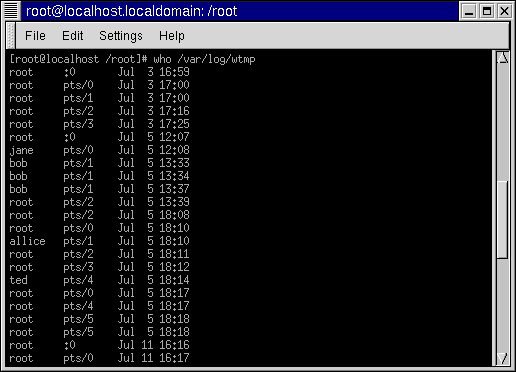Question: What is the command in Red Hat Linux to view log files?
In Red Hat Linux, the command to view log files is "tail". The "tail" command allows you to view the last few lines of a log file, which can be useful for monitoring system activity and troubleshooting issues.
To view the last 10 lines of a log file, you can use the following command:
Replace "<logfile>" with the name of the log file you want to view. For example, to view the last 10 lines of the system log file, you can use:
If you want to continuously monitor the log file and view new entries as they are added, you can use the "tail -f" command. For example:
This command will display the last few lines of the log file and then continuously monitor the file for new entries. Any new entries will be displayed in real-time as they are added to the log file. To exit the "tail -f" command, press "Ctrl + C".
In Red Hat Linux, the command to view log files is "tail". The "tail" command allows you to view the last few lines of a log file, which can be useful for monitoring system activity and troubleshooting issues.
To view the last 10 lines of a log file, you can use the following command:
tail -n 10 /var/log/<logfile>
Replace "<logfile>" with the name of the log file you want to view. For example, to view the last 10 lines of the system log file, you can use:
tail -n 10 /var/log/messages
If you want to continuously monitor the log file and view new entries as they are added, you can use the "tail -f" command. For example:
tail -f /var/log/messages
This command will display the last few lines of the log file and then continuously monitor the file for new entries. Any new entries will be displayed in real-time as they are added to the log file. To exit the "tail -f" command, press "Ctrl + C".
View Logfiles Command in Red Hat Linux
The following screen illustrates the results when viewing logfiles.

How Do I View Logs Files on Linux?
I am a new Linux user and would like to know where are the log files located under
Debian/Ubuntu or CentOS/RHEL/Fedora Linux server?
Question: How do I open or view log files on Linux operating systems?
Almost all logfiles are located under /var/log directory and its sub-directories on Linux.
You can change to this directory using the cd command. You need be the root user to view or access log files on Linux or Unix like operating systems. You can use the following commands to see the log files:
Debian/Ubuntu or CentOS/RHEL/Fedora Linux server?
Question: How do I open or view log files on Linux operating systems?
Almost all logfiles are located under /var/log directory and its sub-directories on Linux.
You can change to this directory using the cd command. You need be the root user to view or access log files on Linux or Unix like operating systems. You can use the following commands to see the log files:
- less command
- more command
- cat command
- grep command
- tail command
- zcat command
- zgrep command
- zmore command